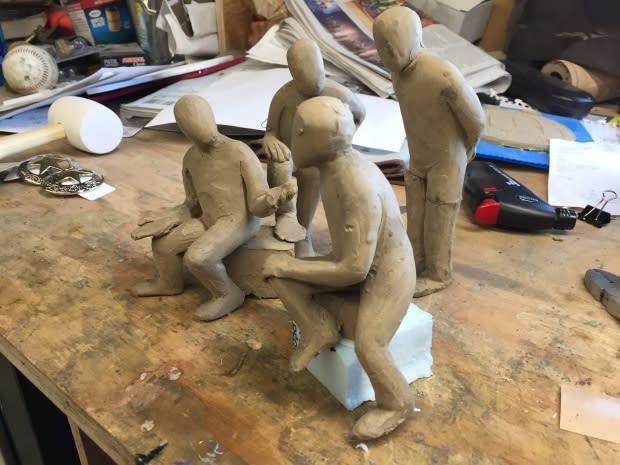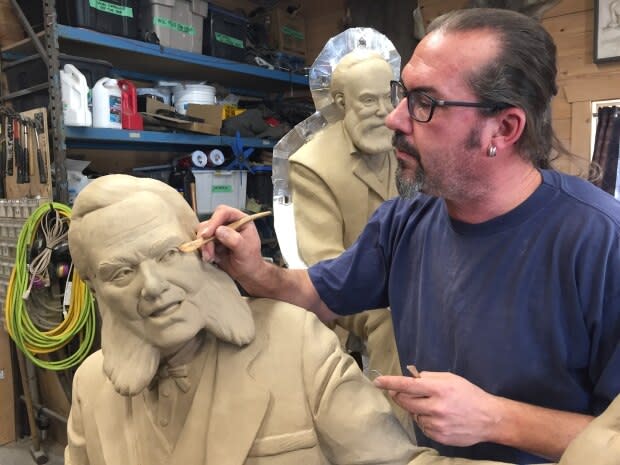Overlooked prime ministers honoured by Kamloops sculptor
John Abbott, John Thompson, Mackenzie Bowell and Charles Tupper: They're not exactly household names.
But in his Kamloops studio, artist Nathan Scott is painstakingly creating clay models for life-size sculptures of the four early Canadian prime ministers who are sometimes called "the unfortunate four."
In the five years after the death of Canadian prime minister John A. Macdonald in 1891, each of the four men held Canada's most powerful political position for a short time.
Their terms were cut short by "ill health, death, resignation and a snap election," Scott told Daybreak Kamloops' Jenifer Norwell, who visited the artist in his studio.

"It was just really an unfortunate time, where it was supposed to go really smoothly and just nothing happened," Scott said.
"I don't think any of these guys ever wanted to become prime minister. It was just being at the right place at the wrong time. And there they are."
The Ontario charitable organization that commissioned the sculptures asked for them to be placed in a conversational grouping, Scott said. It was appropriate because they would have known each other as active members of the same party during the same time.
After being cast in bronze, Scott's Unfortunate Four will join more well-known members of their rank along the Prime Ministers Path in the township of Wilmot, Ont. The others include Sir John A. Macdonald, Kim Campbell, Lester B. Pearson and another of Scott's sculptures, Sir Robert Borden.
Scott said as he read and learned more about his latest subjects he came to see their largely forgotten status as undeserved.

Despite their brief tenures, he said, "there were things that they were involved with that shaped our country. It might have been small at that very time for them, or be something they didn't want to deal with, but it ultimately shaped our country."
When complete, each figure will include several "Easter eggs" — subtle symbols or icons revealing significant details about the person.
The sculpture of Tupper, who was a doctor, has a stethoscope. Abbott, a lawyer, grips a newspaper with articles about him. Other "Easter eggs" indicate Thompson's Catholicism and for Bowell, holding an orange, his position as grand master of the Protestant orange order.
To hear the complete interview with artist Nathan Scott, tap the link below:
With files from Jenifer Norwell and Daybreak Kamloops


